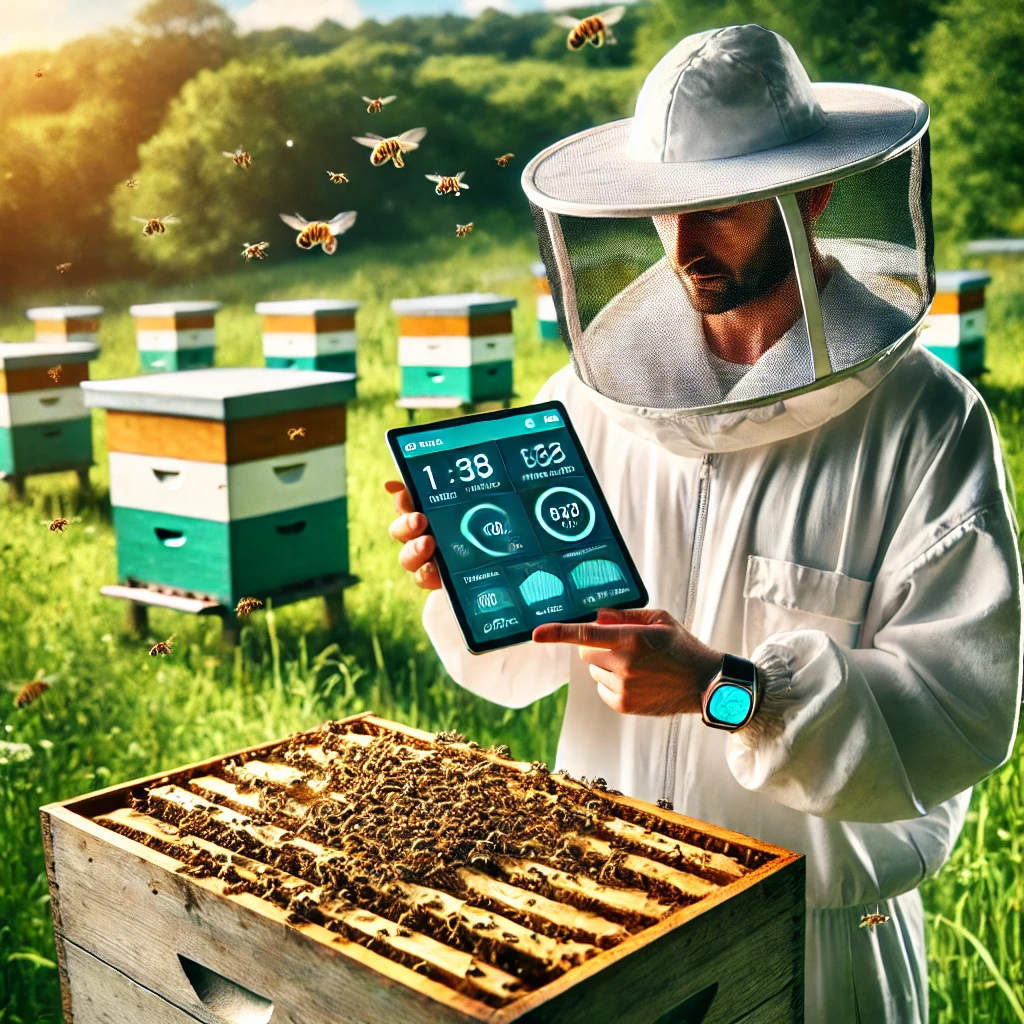The future of beekeeping: IoT and AI-powered precision monitoring enhances hive health
Precision beekeeping is an advanced approach that utilizes IoT-enabled sensors to monitor honeybee colonies, providing data on hive weight, temperature, humidity, sound vibrations, and gas levels. These parameters help beekeepers detect early signs of health deterioration, swarming, or environmental stress. The study outlines various IoT-based systems, each equipped with different sensors and microprocessors, such as the Raspberry Pi, Arduino Mega, and NVIDIA Jetson Nano.

The decline in honeybee populations poses a critical threat to global food security, as bees play a crucial role in pollination. Traditional beekeeping practices, while effective, often lack real-time monitoring and predictive insights needed to sustain healthy colonies.
In response to these challenges, researchers Agatha Turyagyenda, Andrew Katumba, Roseline Akol, Mary Nsabagwa, and Mbazingwa Elirehema Mkiramweni explore the intersection of Internet of Things (IoT) technologies and machine learning (ML) techniques in their study "IoT and Machine Learning Techniques for Precision Beekeeping: A Review." Published in AI 2025, this review paper provides a comprehensive analysis of how these emerging technologies are transforming apiculture.
The role of IoT in precision beekeeping
Precision beekeeping is an advanced approach that utilizes IoT-enabled sensors to monitor honeybee colonies, providing data on hive weight, temperature, humidity, sound vibrations, and gas levels. These parameters help beekeepers detect early signs of health deterioration, swarming, or environmental stress. The study outlines various IoT-based systems, each equipped with different sensors and microprocessors, such as the Raspberry Pi, Arduino Mega, and NVIDIA Jetson Nano.
One of the primary benefits of IoT in beekeeping is non-invasive monitoring, which allows for data collection without disrupting colony activities. For instance, vibration and acoustic sensors detect hive disturbances, while gas sensors monitor carbon dioxide and oxygen levels, indicators of metabolic processes and colony health. However, despite the promise of IoT, challenges remain, particularly in terms of power efficiency, data transmission, and sensor calibration for accuracy and reliability.
Moreover, IoT systems facilitate remote monitoring, reducing the need for frequent physical inspections and allowing beekeepers to track hive conditions in real time via mobile applications or cloud-based dashboards. This capability is particularly beneficial for commercial beekeepers managing multiple apiaries spread over large areas. The implementation of wireless communication protocols, including LoRaWAN and Zigbee, further enhances the scalability and accessibility of these systems.
Machine learning applications in beekeeping
Machine learning algorithms enhance precision beekeeping by analyzing collected IoT data to detect patterns, predict colony behavior, and classify bee activities. The study examines various ML techniques, including Convolutional Neural Networks (CNNs), Support Vector Machines (SVMs), and Recurrent Neural Networks (RNNs), each applied to tasks such as disease detection, queen presence identification, and swarm prediction.
For instance, CNN models have shown promising results in automated Varroa mite detection, a major threat to honeybee colonies. Similarly, RNNs analyze time-series data to predict swarming events, helping beekeepers intervene before colony relocation occurs. However, despite these advancements, ML models face challenges related to dataset limitations, computational requirements, and generalizability across different apiaries. Ensuring diverse and high-quality training datasets is crucial for improving accuracy and performance in real-world scenarios.
Furthermore, reinforcement learning models are being explored for optimizing beekeeping decisions, such as hive placement, pest control measures, and honey extraction schedules. By learning from environmental and hive conditions, these models can recommend adaptive strategies that improve colony health and productivity over time.
Challenges and future directions
While IoT and ML technologies offer transformative potential for beekeeping, the study identifies key research gaps and technological challenges. One major limitation is energy sustainability, as many IoT systems rely on battery power, making long-term deployment in remote areas difficult. The authors suggest exploring low-power sensors, energy-efficient communication protocols (such as LoRaWAN), and solar energy solutions to address this challenge.
Another issue is the scalability of IoT systems, as many existing solutions focus on individual hives rather than large-scale commercial beekeeping operations. Future research should explore adaptive ML models that can process data from multiple hives simultaneously, providing real-time insights at the apiary level. Additionally, the integration of multimodal monitoring, combining video analysis, acoustic detection, and gas sensing, could improve accuracy and reliability in hive health assessments.
Moreover, data privacy and cybersecurity risks are emerging concerns in precision beekeeping. As IoT systems collect vast amounts of data, ensuring secure transmission and storage is critical to preventing unauthorized access or data breaches. The development of blockchain-based authentication protocols could enhance trust and data integrity in digital beekeeping platforms.
Conclusion
The study highlights the need for more interdisciplinary collaboration between AI researchers, beekeepers, and environmental scientists to refine IoT and ML applications in apiculture. Developing open-source datasets and standardized evaluation metrics for ML models can enhance transparency and reproducibility in research.
Additionally, regulatory frameworks must evolve to accommodate the integration of AI and IoT in agriculture. Policymakers should consider establishing guidelines for data ownership, AI-driven decision-making accountability, and ethical considerations in automated beekeeping practices.
As technology advances, precision beekeeping is poised to become a mainstream practice, improving hive management, increasing honey production, and contributing to pollinator conservation efforts. By harnessing the power of IoT and machine learning, the future of beekeeping can be more data-driven, sustainable, and resilient against environmental threats.
- FIRST PUBLISHED IN:
- Devdiscourse










